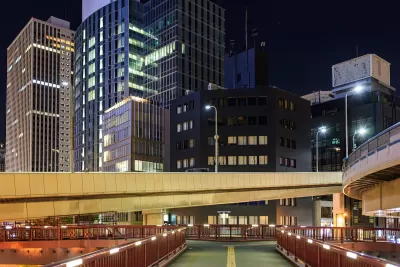The adaptive reuse of office buildings for residential and other uses will grow by as much as 63 percent in 2024 over last year.

Office conversion projects in the United States are expected to increase by 63 percent in 2024 over 2023, according to real estate services company CBRE.
Writing in Smart Cities Dive, Nish Amarnath notes that 73 adaptive reuse projects are already completed, while 30 more are expected to be finished by the end of the year. “Office-to-multifamily housing projects account for nearly 75% of the conversion pipeline in Q3, up from 63% in the first quarter, per the report.” In some cases, conversion can cost up to 30 percent less than new construction.
The growth comes as the demand for office space continues to lag far below pre-pandemic levels in most cities and the housing crisis rages on. At the same time, cities and states are adjusting regulations to encourage adaptive reuse and make conversions easier and more cost-effective.
The report adds that office-to-multifamily conversion projects have created 28,000 housing units since 2016. “The growing conversion activity is anticipated to reshape business-centric districts into dynamic mixed-use neighborhoods, the firm says.”
While not all office buildings are appropriate for residential conversion, some are also being transformed into life sciences facilities, hotels, and other types of uses.
FULL STORY: US office conversions could be up 63% in 2024 as cities remove barriers, real estate company says

Maui's Vacation Rental Debate Turns Ugly
Verbal attacks, misinformation campaigns and fistfights plague a high-stakes debate to convert thousands of vacation rentals into long-term housing.

Planetizen Federal Action Tracker
A weekly monitor of how Trump’s orders and actions are impacting planners and planning in America.

In Urban Planning, AI Prompting Could be the New Design Thinking
Creativity has long been key to great urban design. What if we see AI as our new creative partner?

Pedestrian Deaths Drop, Remain Twice as High as in 2009
Fatalities declined by 4 percent in 2024, but the U.S. is still nowhere close to ‘Vision Zero.’

King County Supportive Housing Program Offers Hope for Unhoused Residents
The county is taking a ‘Housing First’ approach that prioritizes getting people into housing, then offering wraparound supportive services.

Researchers Use AI to Get Clearer Picture of US Housing
Analysts are using artificial intelligence to supercharge their research by allowing them to comb through data faster. Though these AI tools can be error prone, they save time and housing researchers are optimistic about the future.
Urban Design for Planners 1: Software Tools
This six-course series explores essential urban design concepts using open source software and equips planners with the tools they need to participate fully in the urban design process.
Planning for Universal Design
Learn the tools for implementing Universal Design in planning regulations.
planning NEXT
Appalachian Highlands Housing Partners
Mpact (founded as Rail~Volution)
City of Camden Redevelopment Agency
City of Astoria
City of Portland
City of Laramie





























